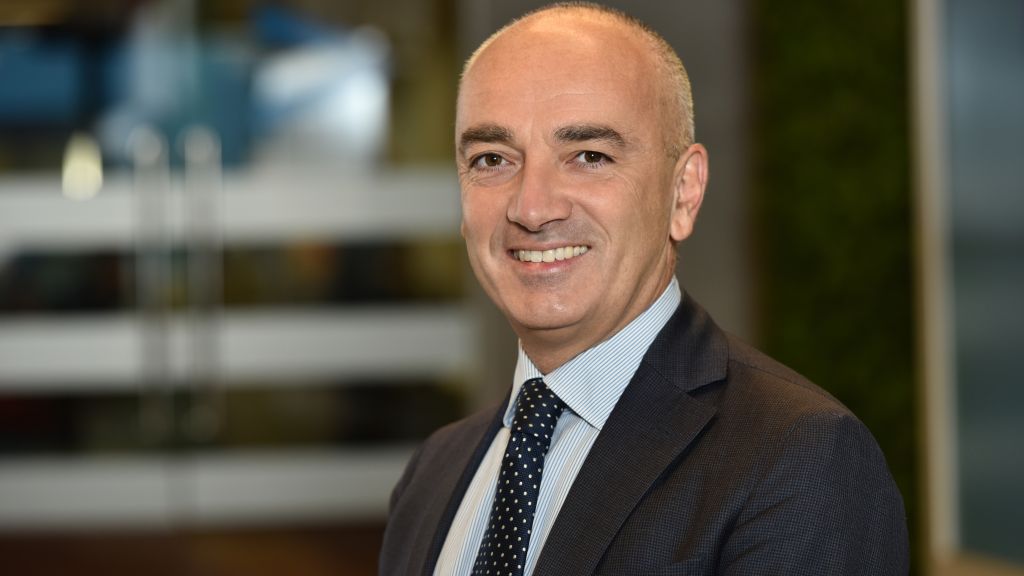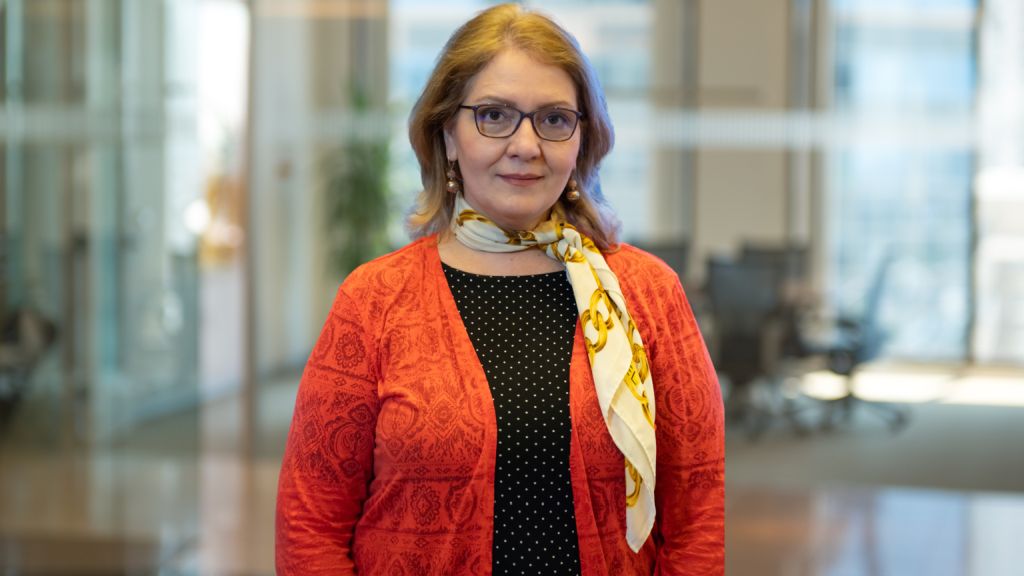Being digitally fluent will be key to future survival and growth
Q: How did Accenture perceive 2021 from a transformational perspective?
Gianrodolfo Tonielli: Our fiscal year 2021 (September 2020 – August 2021) was a very good year for us, and we see the demand for fiscal year 2022 to be more of the same. For the past two years, many organizations were compelled to adapt to a compressed transformation. New supply chains and business models were set up in days not months, and the promise of new scientific breakthroughs was emphatically realized in months, not years. Today a business environment ripe for reinvention emerged, with a strong desire to look deeper into the future and to better map the trajectory and impact of change. In our case, compressed transformation underpinned by cloud and digital continued to drive strong double-digit growth across our business. Our clients value the depth and breadth of our services for the entire enterprise across Strategy and Consulting, Interactive, Technology and Operations and industry and functional expertise across 13 industries plus the ability to deliver tangible outcomes as well as our strong track record of investing ahead of our clients to anticipate their needs and drive our next waves of growth, such as our early moves in digital, cloud and security.
Q: How do you think you will perform this year versus the expectations you had at the beginning of 2021?
Gianrodolfo Tonielli: Globally, revenues for the full 2021 fiscal year were $50.5 billion, compared with $44.3 billion for fiscal 2020, an increase of 14%. Locally, in fiscal year 2021 Accenture has grown above the market average recording a strong double-digit growth. For fiscal year 2022, we expect revenue growth of 12% to 15%, at the global level.
Q: In your CEO survey, just a third (32%) of European respondents expect to deliver profitable growth in the next phase of recovery. Do you think that these companies managed to fulfil their expectations?
Gianrodolfo Tonielli: This year, organizations once resistant to change have been transformed. We’ve seen how companies that were able to incorporate new processes, refocus efforts, and expedite decision-making have sustained, and even grown, their businesses over the course of the pandemic. They are clear proof that even with a tightly compressed timeline and variables on every front, it is possible to meet the pace of change happening across industries and markets. These are companies in fields such as Pharma, Biotech, Life Sciences, Software & Platforms, Communications & Media, Consumer Goods & Services and High Tech. Today there is a strong consensus that companies must proactively shift their strategies, rethink their trajectory and bring their people along to adapt to this new landscape as they reinvent for a profoundly different tomorrow.
Q: Why should companies focus on twin transformation and what would be the benefits?
Gianrodolfo Tonielli: Digital transformation defined the business landscape in the last ten years and according to our research the next decade of business change will be defined by the sustainability transition. This combination of sustainability and digital technologies is key to igniting future competitiveness and we call it Twin Transformation. A few companies are already ahead in terms of linking digital and sustainable transformation and these organizations are far more likely to have proven resilient during the COVID-19 crisis. Twin transformation leaders invest more in innovation across the board, allocating more than 10% of their annual revenue to research and development. They also recognize that sustainability and technology are not separate priorities. Also, they spare no effort in reskilling/upskilling their workforce, understanding that building and nurturing talent is essential to turning transformation into tangible business value. One example is Deutsche Post DHL Group. To help consumers opt for low-carbon shipping, Deutsche Post DHL Group has developed the GoGreenCarbon Dashboard. Through this dashboard, companies using logistics services can view analyses of carbon emissions associated with their shipments, mapping emissions across their supply chain. The resulting transparency allows users to benchmark and set targets, identify carbon contributors and develop reduction strategies.
Q: Sustainability is a very “hot” topic these days. How should companies approach sustainability while having a focus on growth?
Gianrodolfo Tonielli: Sustainability is a critical area for which technology is still evolving—we believe that every business must be a sustainable business—and yet, companies are at very early stages of figuring out how to make this shift. When Accenture interviewed executives at the height of the pandemic, 73% of them identified “becoming a truly sustainable and responsible business” as a top priority for their organization over the next three years. Fulfilling these ambitions requires significant organizational transformation, including reimagining business models, operating models and talent strategies. The practical steps that leader can take to strengthen their organizations’ Sustainability DNA are: understand how strong the sustainability DNA of their organization is today by conducting a high-level assessment; establish sustainability DNA by aligning it with their organization’s sustainability strategy; and last but not least, build a roadmap for change with a clear set of KPIs to measure success.
Q: How do you define Cloud Continuum and what are its benefits?
Gianrodolfo Tonielli: The array of technologies that make up the Cloud Continuum varies by ownership and location, from close to the enterprise to completely off-premises. Advanced networking technologies like 5G and software-defined networking unify the continuum, allowing access to the cloud from virtually anywhere.
The reason we call cloud a continuum is because innovations that used to be exclusively in the public cloud can now be found in multiple locations and destinations from public cloud through edge and everything in between. Rather than treating each of these locations as silos, companies will realize more value if they treat them as a seamless continuum of capabilities that they can choose from to meet ever-changing business needs.
Continuum Competitors are organizations that are using the cloud not just as a single, static destination, but as a future operating model. They’re transforming how they interact with customers, partners and employees; how they make and market their products, services, and experiences; how they build and operate their IT systems; and they’re reimagining the role of data and compute.
The cloud of today is always changing. It’s where many of the world’s breakthrough innovations are happening. Harnessing those innovations requires a commitment to permanent reinvention, supported by advanced Cloud Continuum practices.
Q: What are some of the best practices in the Cloud Continuum area?
Gianrodolfo Tonielli: We believe most companies are about 20-30% in the cloud today, and they need to get to 80% to remain competitive. We thought it would take a decade for most companies to get to 80%. Now we see it happening in three years. By studying Continuum Competitors’ use of cloud, we found that it’s critical that leaders understand how to balance their own continuum ambitions with strategic priorities that will keep the business focused.
First, an organization must develop a strategy with a vision that clearly states the core values and future aspirations, identifies competitive vulnerabilities and classifies capabilities relative to where the company is today and its future aspirations. They must develop these strategies by taking into account the constant evolution of cloud capabilities across the continuum. Second, the agility is the most critical mindset to being a Continuum Competitor; it infuses cloud-first apps, talent transformation, information technology experimentation and compute awareness, among other areas. And last but not least, Continuum Competitors use a combination of human-centred design and cloud-based technologies such as edge computing to rethink experience to push it closer to where their customers, partners and employees engage. This is done by driving the experience mindset throughout the organization, including products and services, employee experience and delivery models. Organizations must also recognize the “all-hands” nature of the challenge: everyone across the organization needs to be informed of the cloud’s ever-improving potential and best practices.
Q: What are top 5 opportunities you see in 2022 for companies in Romania? How do you see the Romanian market evolution in 2022?
Gianrodolfo Tonielli: Romania is a very important country for us. This year we celebrate 15 years of activity, and I am very proud of our over 4,000 employees, and their work. Accenture is a trusted partner with recognized experience who has end-to-end capabilities to help companies transform on a scale. Here we have complete capabilities that help companies in digital transformation, and we are recognized as a provider of complete and innovative solutions for the automotive, retail, industrial equipment, communications, pharmaceutical, utilities, banking and insurance, energy, etc. Although the market has grown considerably Romania has an important gap compared to other European countries. In terms of adoption of the cloud the average in Romania is at 16%, while in European Union the average is 37%. It is also very important for companies to focus on digital fluency and equipping workers with digital skills. Digital fluency is the missing ingredient in many digital transformation efforts. When the technologies are there and people are equipped with the right skills to use them, it can transform ways of working to benefit the business as a whole. Being digitally fluent will be key to future survival and growth.
You can also consult the interview in the document below:






























